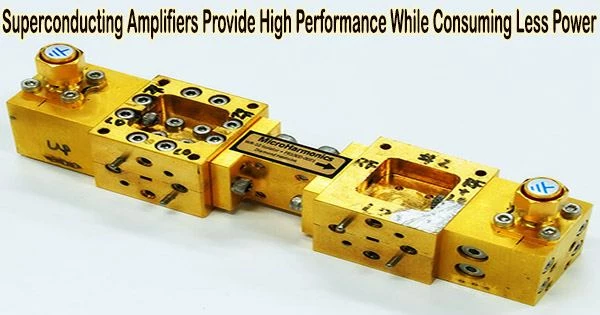In order to use radio wave detectors for radio astronomy observations, researchers have developed a new concept for superconducting microwave low-noise amplifiers. They have also successfully demonstrated a high-performance cooled amplifier with power consumption three orders of magnitude lower than that of conventional cooled semiconductor amplifiers.
The development of large-scale multi-element radio cameras and error-tolerant quantum computers, both of which call for a lot of low-noise microwave amplifiers, is anticipated to benefit from this result.
An SIS mixer is the name of the device they employed. The very thin insulator film that is sandwiched between two layers of superconductors (S-I-S) gives the SIS mixer its name. In a radio telescope, an antenna collects cosmic radio waves, which are then fed into a SIS mixer, which then amplifies the output signal using low-noise semiconductor amplifiers.
An SIS mixer operates in a very low temperature environment, as low as 4 Kelvin (-269 degrees Celsius), and the amplifiers are also operated at that temperature.
Researchers are creating a large-format radio camera with 2D arrays of SIS mixers and amplifiers to enhance the performance of radio telescopes. However, the power consumption is a limiting factor.
The typical power consumption of a semiconductor amplifier is about 10 mW, and by assembling 100 sets of detectors, the total power consumption reaches the maximum cooling capability of a 4 Kelvin refrigerator.
The research team led by Takafumi Kojima, an associate professor at the National Astronomical Observatory of Japan (NAOJ), has come up with a simple but innovative idea to realize a superconductor amplifier by connecting two SIS mixers. The group makes use of the frequency conversion and signal amplification functions of the SIS mixer.
By changing the configuration of the components, we can further improve the gain and low-noise performance of an SIS amplifier. The idea of connecting two SIS mixers has broader applications for making various electronics that have functions other than amplification.
Professor Takafumi Kojima
“The most important point is that the power consumption of an SIS mixer is, in principle, as low as microwatts,” says Kojima. “This is three orders of magnitude less than that of a cooled semiconductor amplifier.”
The team expanded both the theoretical analyses of the system and the physical execution of its numerous components after receiving successful preliminary results in 2018.
The research team ultimately improved the system and created a “SIS amplifier” with 58 dB (three to six times) gain below the frequency of 5 GHz and a typical noise temperature of 10 K, which is comparable to the current cooled semiconductor amplifiers such as HEMT and HBT but uses much less power.
“By changing the configuration of the components, we can further improve the gain and low-noise performance of an SIS amplifier,” explains Kojima. “The idea of connecting two SIS mixers has broader applications for making various electronics that have functions other than amplification.”
It’s interesting to note that large-scale error-tolerant quantum computers are also eagerly awaited for this low-noise, low-power amplifier. Currently available quantum computers are small-scale with less than 100 qubits, but larger-scale, error-tolerant general-purpose quantum computers will require more than 1 million qubits.
A huge number of amplifiers must be built in order to manage a large number of qubits, and the power consumption of the amplifiers must be drastically reduced.
NAOJ has experience in the development of superconducting receivers for a number of radio telescopes, including NAOJ’s Nobeyama 45-meter Radio Telescope, which started operation in 1982.
NAOJ is also currently working to upgrade the superconducting receivers to improve the performance of the Atacama Large Millimeter/submillimeter Array (ALMA), which is operated in the Republic of Chile in cooperation with East Asia, Europe, and North America.
Of the 10 types of receivers (corresponding to 10 different frequency bands) currently installed on ALMA, three were developed by NAOJ, and the SIS chips at the heart of these receivers were also developed and produced in the cleanroom of the NAOJ Advanced Technology Center (ATC).
In addition to realizing more potent radio telescopes, the NAOJ ATC continues to support research on the miniaturization and integration of superconducting circuits because of their potential to serve as the foundation for a number of future technologies, including quantum computing.
















